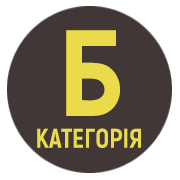ОБРАЗ КОХАНЦЯ-НЕБІЖЧИКА У ТВОРАХ ФЕДОРА ПОТУШНЯКА (СТАТТЯ «МЕРТВА ЛЮБОВ», НОВЕЛИ «ЯМА», «КАПЕЛЮХ ІЗ ЗЕЛЕНИМ ПЕРОМ») ТА В УКРАЇНСЬКИХ КАЗКАХ
DOI:
https://doi.org/10.32782/folium/2024.4.39Ключові слова:
Федір Потушняк, українські казки, демон-спокусник, магічний ритуал, міфологія, символи, психоаналіз, перелесник, воскресіння мертвих, діалектизмиАнотація
Метою статті є осмислення фольклорно-етнографічної розвідки Федора Потушняка, що має назву ««Мертва любов» в народних віруваннях» (1944), а також новел письменника «Яма» та «Капелюх із зеленим пером», вивчення з погляду психоаналізу повір’їв та легенд про демонічних коханців, зафіксованих дослідником, містичних передумов їх появи в житті покинутих чи самотніх жінок. Ф. Потушняк акцентував увагу на магічних ритуалах, поширених на Закарпатті, які мали на меті припинити відвідування мертвого коханця. Задля цього селяни освячували хату, у ліжко одержимому клали святу воду, мак, ніж, на поріг ложили сокиру вгору лезом, самого недужого одягали в старий церковний одяг (стихар та епітрахиль). На Закарпатті побутують казки, легенди та бувальщини про мертвого коханця, який приходить до дівчини/жінки. У казках героїня може померти й у такий спосіб уникнути стосунків з чортом, а потім народитися знову й вдало вийти заміж (казка «Прядки»). Однак якщо дівчина/жінка вдається до магічного ритуалу, щоб викликати мертвого коханця, то на неї, як правило, чекає смерть. Зокрема, казки «Попадя і її мертвий коханок» та «Коханок-мерлець», записані В. Гнатюком, відображають вражаючий магічний акт, спрямований на воскресіння померлого коханого: героїні опівночі варять голови небіжчиків (дванадцять або одну), викопані на кладовищі. Коли голови спливають, мертвий коханець з’являється, але з метою умертвити жінку, а не самому залишитись серед людей. Ці сюжети містять виразний дидактичний підтекст: гостро засуджують магічні ритуали, спрямовані на порушення встановлених законів життя-смерті-життя. Згідно з народним світоглядом, зустрічі з мертвими є гріхом, вони руйнують душу людини, яка не здатна сприйняти справжню реальність й моделює для себе уявний комфортний світ, уникаючи болю й самотності. Такий фольклорний мотив художньо переосмислив Ф. Потушняк у новелі «Яма», яскраво змоделювавши образ покинутої усіма самотньої жінки, яка внаслідок важкої психологічної травми у своїх мареннях, які сприймає за дійсність, спілкується з давно померлим чоловіком. Письменник показує, як глибока віра селян у демонів-перелесників стає передумовою вбивства братом сестри. Новела Ф. Потушняка «Капелюх із зеленим пером» моделює ситуацію одержимості страхом перед демонічним коханцем-небіжчиком, який з’являється в селі після того, як було розкопано його могилу. Письменник огортає оповідь містикою, і відповіді на питання, чи дійсно оживав мрець, читач не отримує.
Посилання
Вархол Н. Народна демонологія українців Словаччини. Свидник, 2017. 448 с.
Гнатюк В. Етнографічні матеріали з Угорської Русі. Том 2: Казки, байки, оповідання про історичні особи, анекдоти. Етнографічний збірник. Видає Етнографічна комісія Наукового товариства імені Шевченка. Львів, 1898. Том 4. 256 с.
Гнатюк В. Етнографічні матеріали з Угорської Русі. Том 5: Казки з Бачки. Етнографічний збірник. Видає Етнографічна комісія Наукового товариства імені Шевченка. Львів, 1910. Том 29. 318 с.
Лях Т. Метафізика пошуку в новелах Федора Потушняка. Слово і час. 2019. №1. С. 52–59.
Папіш В. Лінгвокультурологічний та етнопсихологічний аспекти художньої прози Ф. Потушняка. Науковий вісник Ужгородського університету. Серія: Філологія. Соціальні комунікації, 2011. Вип. 26.С. 195–198.
Потушняк Ф. Честь роду. Оповідання. Повість. Поезії у прозі. Ужгород: «Карпати», 1973. 247 с.
Потушняк Ф. Демони в народному віруванні. ІІІ. Чорт і домовик. Русское слово. Ужгород, 1940. № 12 (16 октября). С. 4.
Потушняк Ф. «Мертва любов» в народному віруванні. Литературна недѣля. Річник IV. Ужгород, 1944. С. 31–33.
Тиховська О. Міфологізм новел Федора Потушняка «Капелюх із зеленим пером», «Упир», «В мочарах». Науковий вісник Ужгородського університету: Серія: Філологія, 2022. Вип. 1 (47). С. 107–113.
Тиховська О. Міфологічні образи та магічні ритуали в українському фольклорі Закарпаття: етнопсихологічний аспект. Дисертація ….доктора філологічних наук за спеціальністю 10.01.07 «Фольклористика» (035 – Філологія), Львів, 2021. 534 с.
Тиховська О. М Українська народна чарівна казка: психоаналітичний аспект: Монографія. Ужгород: Ґражда, 2011. 256 с.
Три золоті слова: Закарпатські казки Василя Короловича / запис текстів та впорядкування П. Лінтура. Ужгород: Карпати, 1968. 239 с.
Українські міфи, демонологія, легенди. Упоряд. М. К. Дмитренко. Київ: Музична Україна, 1992. 144 с. (с. 107–113).
Чубинський П. Мудрiсть вiкiв: Українське народознавство у творчiй спадщинi Павла Чубинського: У 2 кн. Кн. 1. Київ: Центр навчальної літератури, 2019. 190 с.
Birkhauser-Oeri S. The Mother: Archetypal Image in Fairytales (Studies in Jungian Psychology By Jungian Analysts). Inner City Books, 1988. 172 р.
Calmet A. Dissertations sur les apparitions des anges, des démons et des esprits, et sur les revenants et vampires de Hongrie, de Bohême, de Moravie et de Silésie, par le R. P. Dom Augustin Calmet,..., Paris, de Bure l'aîné, 1746. [Електронний ресурс], Режим доступу: https://gallica.bnf.fr/ark:/12148 (Дата звернення: 2.01.2024)
Franz M.-L. von. On dreams & death: a Jungerian interpretation. Chicago, Ill: Open Court, 1998. 193 р.











